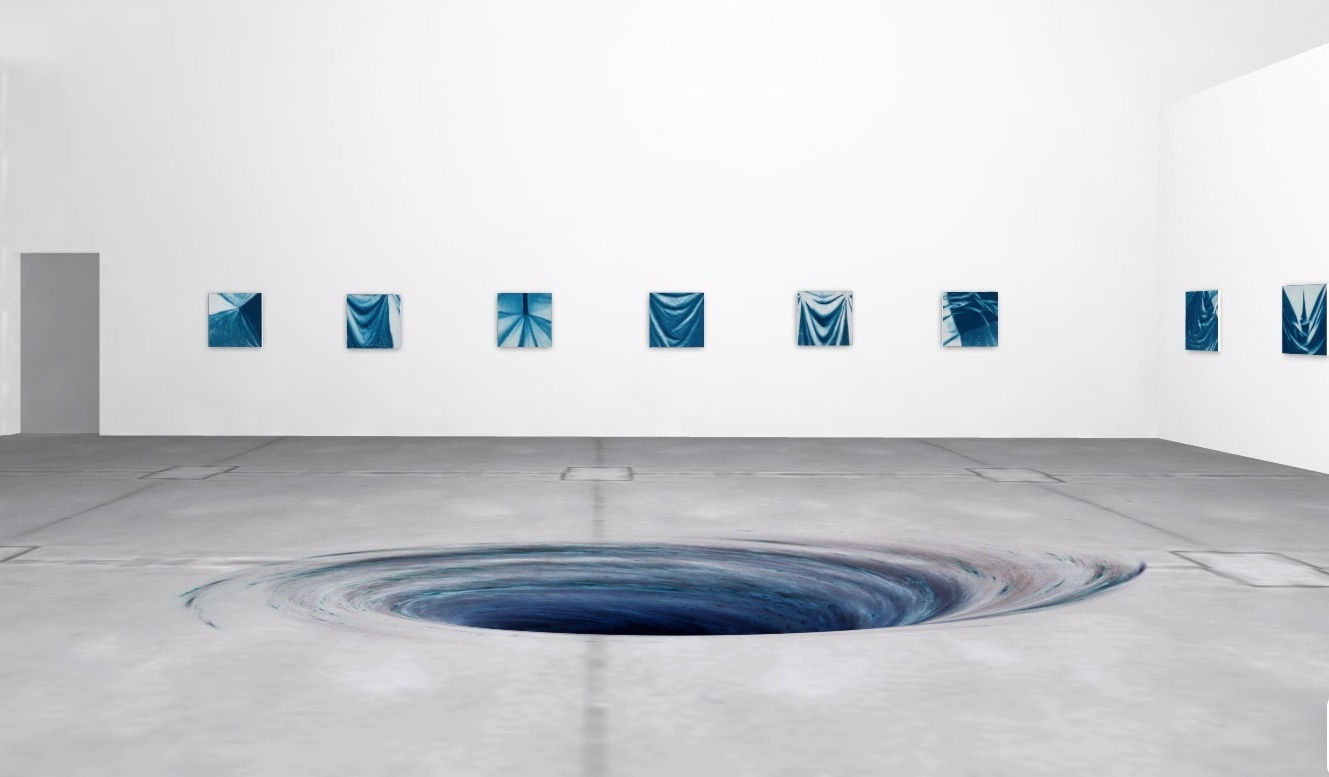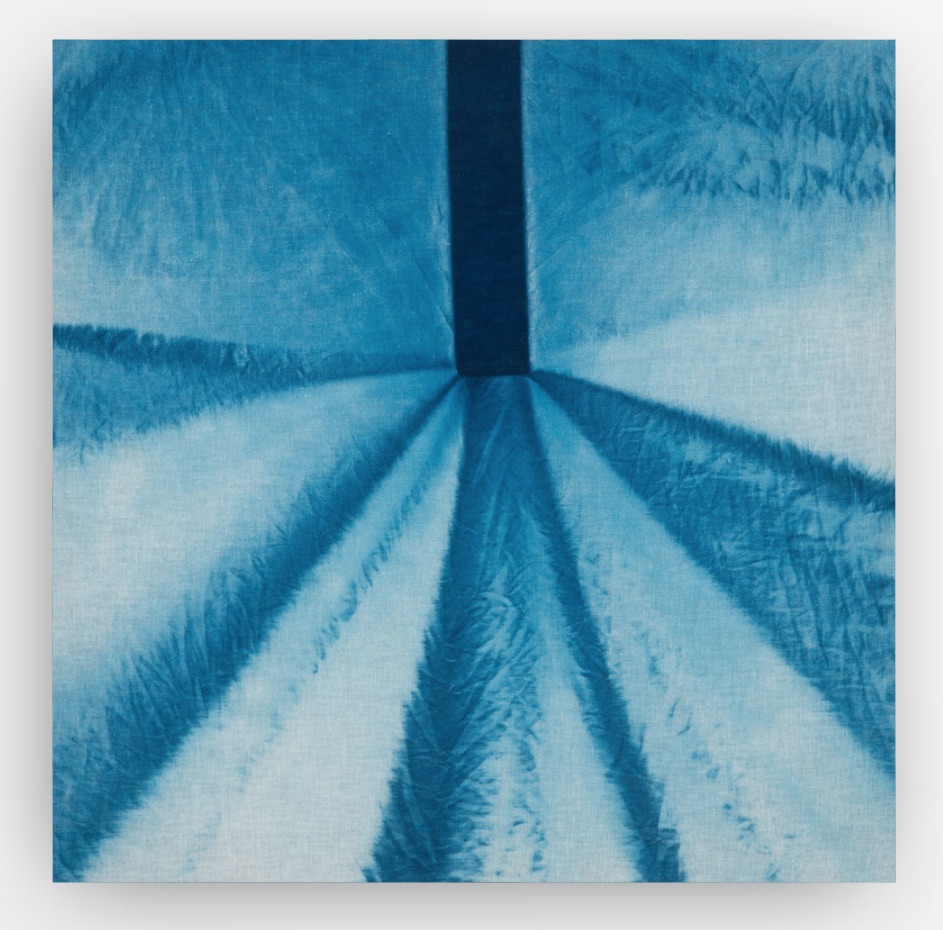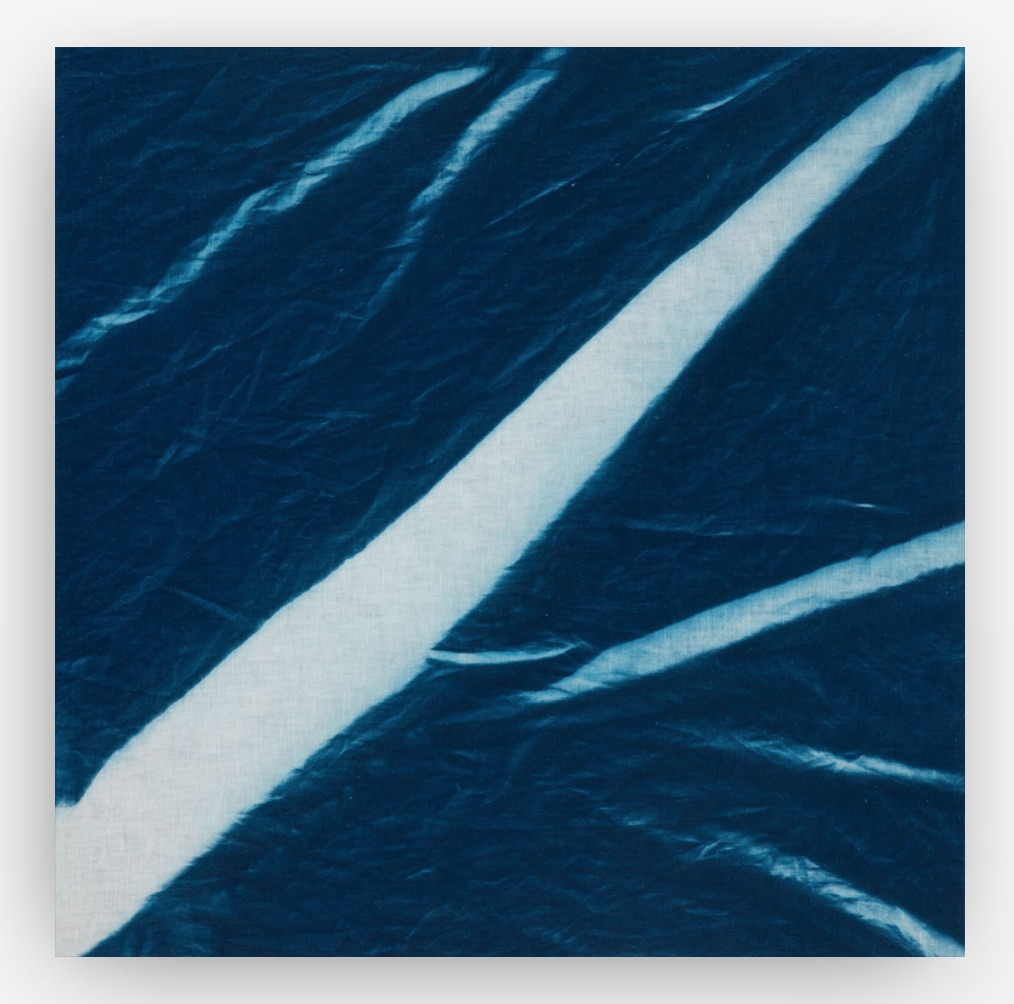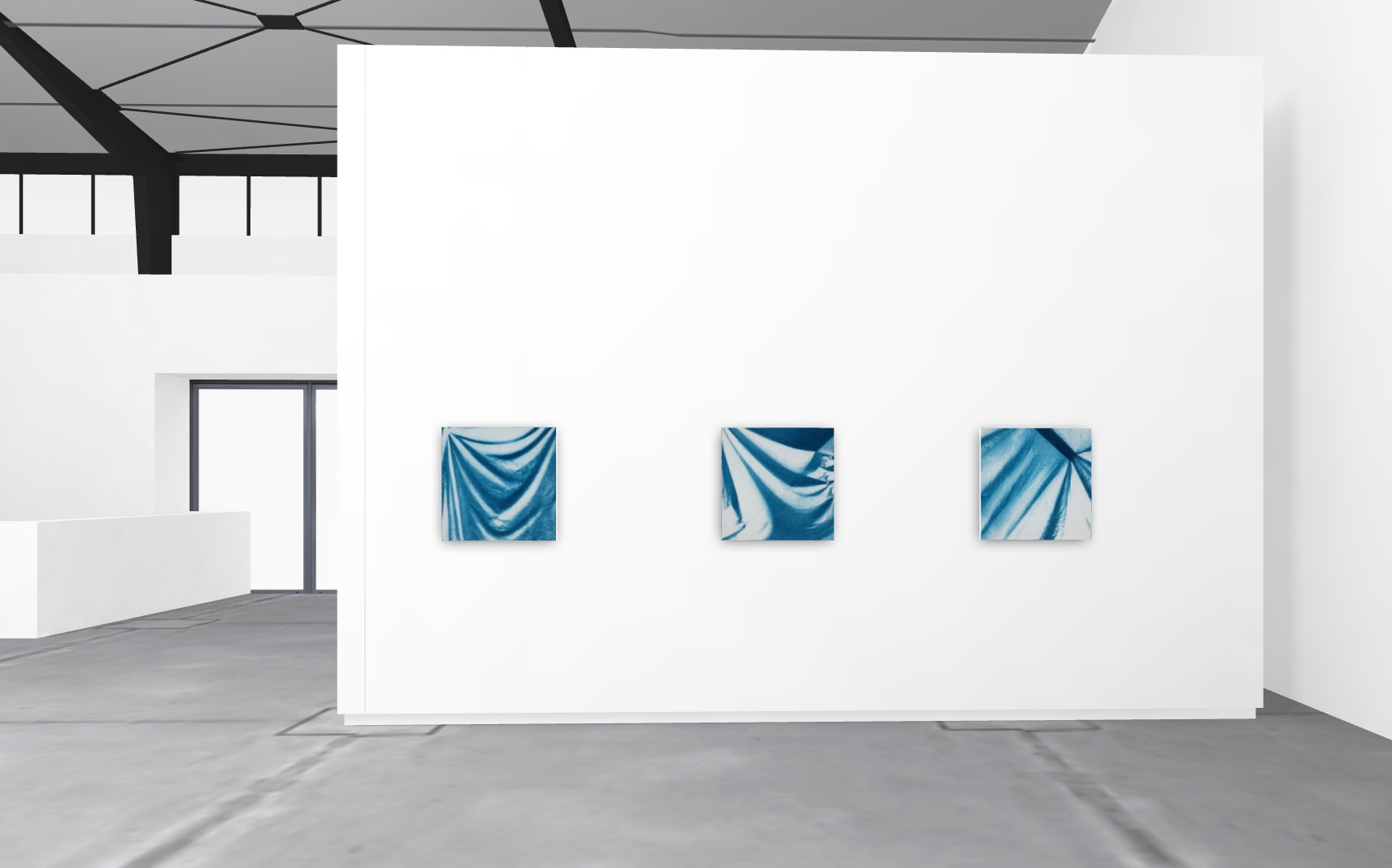
Review
The folds on the horizon between memory and oblivion: Jorge Rosano Gamboa
by Nicolás García Barraza
U at Casa Equis
Reading time
5 min
Four months into the quarantine in Mexico City, the unstoppable Casa Equis, managed by Diego Beyró and Carleti López Traviesa, continues with a dynamic and unexpected virtual exhibition program that has become necessary in this time of peak uncertainty and isolation.
It has been during these months that we have recalled the importance of human connections and community. Art, beyond being a source of entertainment, offers a sense of belonging, keeps the mind active, leads us to think more broadly, and returns us to the spirit of bonding and dialogue.
Now, at Casa Equis, it’s the turn of Jorge Rosano Gamboa, who presents U. This solo show brings together a set of cyanotype prints of the folds of a fabric that the artist has manipulated during his confinement. What results is a series of reliefs aimed at playing with the viewer’s perception. The fabric has been attached to others that maintain the original’s rough texture, producing an optical illusion that’s accentuated when displayed in a digital-space-time. This feature also provides the work with a plastic character, something usually more associated with painting than with photography.
It’s characteristic of Rosano Gamboa to use photography as a means rather than an end. He starts out from photographic aesthetics, moving on towards installation or drawing, exploring the more conceptual side. He uses different techniques in order to reach new territories that not only offer something new and distinctive, but that also keep photography in a constant state of renewal. On this occasion, using cyanotypes, the Mexican artist reflects on the relationship between instant and representation, what he describes as “the lost moment trapped in the form of an image.”
In the online version of the gallery, Rosano Gamboa continues investigating and taking interest in physics and the cosmos; he shares with the rococo painter Jean-Antoine Watteau, the Japanese print master Katsushika Hokusai, as well as the botanist Anna Atkins, a fixation with Prussian blue, which serves as the work’s protagonist.


U aims to be a contemplation of the “spectacle of absence” and a reflection on the folds of memory. The work’s poetic and symbolic range is on display in the twenty-five pieces that hang on the walls of the digital space, as they evoke, along the different folds, the development of memory and its ability to define an individual’s identity.
The changing intensities of the bluish folds allude to the infinity of superimposed moments that inhabit our heads, but which it is not always possible for us to distinguish. The ensemble of supporting frames reflects how uncertain, tangled, and accidental human memory tends to be, something that, like the fabric, is capable of showing different shapes when viewed (illuminated) from another side.
It seems to me that the strongest accent on memory is found in the black hole that’s positioned to be as tempting as it is hazardous, in the center of the gallery. The work alludes to the individual investigation of our past, as well as the recollection and loss of remembrances in memory’s vastness and complexity; hence, the black hole.
While observing the pieces and reading the curatorial text by Gerardo Chávez-Maza, a question pops into my head: “Is our memory to be trusted?” The author writes that black holes are “an event horizon” and that “all tangible or intangible information that enters is lost.” Nevertheless, more recent studies argue that in black holes “information is stored and encoded.”
From these two facets of the black hole, I think about the function of memory, both in Gamboa’s pieces and in confinement. During these months, memories that I thought were forgotten have come to light, friends who had become strangers have manifested themselves, wounds that had been left unhealed have claimed their moments of care, repressed anger has come out to breathe and has demanded, loudly, to be calmed, forgiven, overcome.
The quarantine and its intrinsic relationship with memory reverberates in deep pleats and monochrome. As if that is where we stored what is most beautiful and prosperous in our existence as well as what is saddest and most painful. Those hidden nooks that, as in the fabrics, are barely illuminated, lie in wait to be noticed, and remain a part of us. Just as in black holes, memories are not lost; they are simply encoded and become lessons, habits, and routines.

The project serves in memoriam of the tenth anniversary of the death of Gamboa’s father. Perhaps the work allows us to glimpse an aspect of grief and loss that is not mentioned so often, but that the black hole itself reveals: death never leaves us, and neither does the memory of those we loved the most and who have left us.
Our memory is inhabited by countless remembrances, some of which are modified over time; tangible objects exist in space, as evidence of the passage of a loved one from the world. Gamboa’s work makes me think of the need to honor our dead, instead of succumbing to the sorrow of an eternal grief: to celebrate life and death, to treasure our memories and the time in which we have lived.
Published on August 13 2020